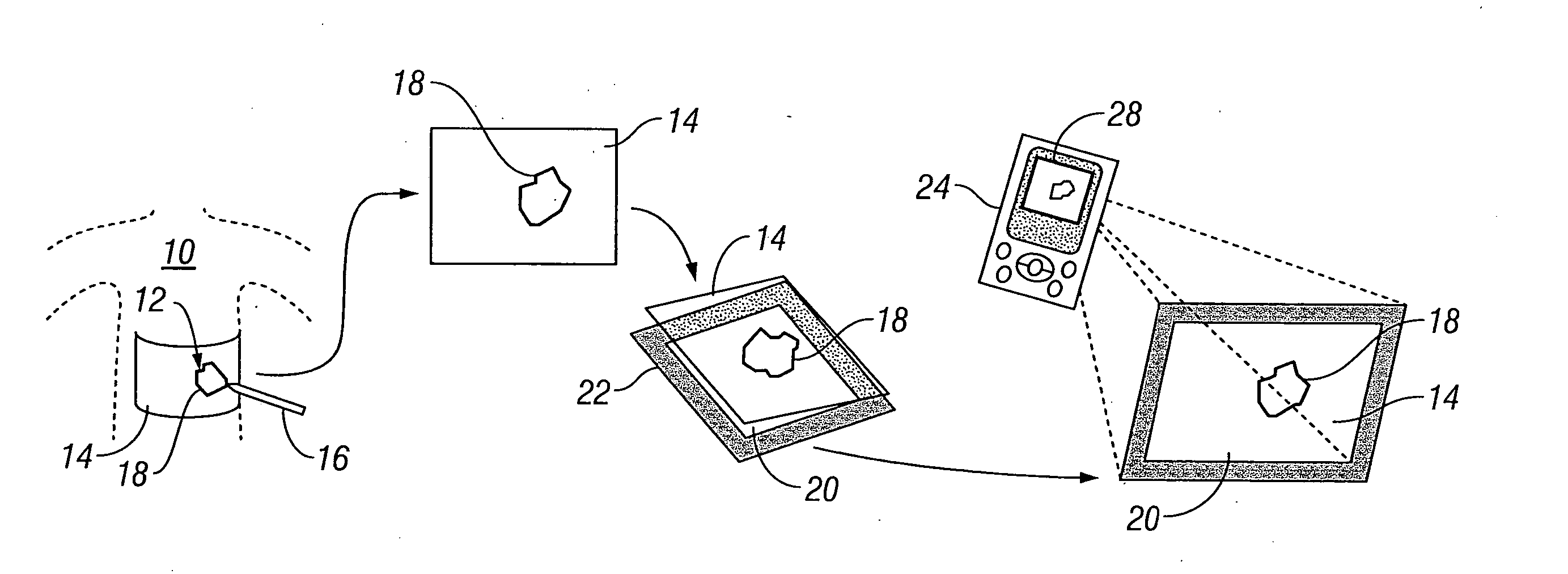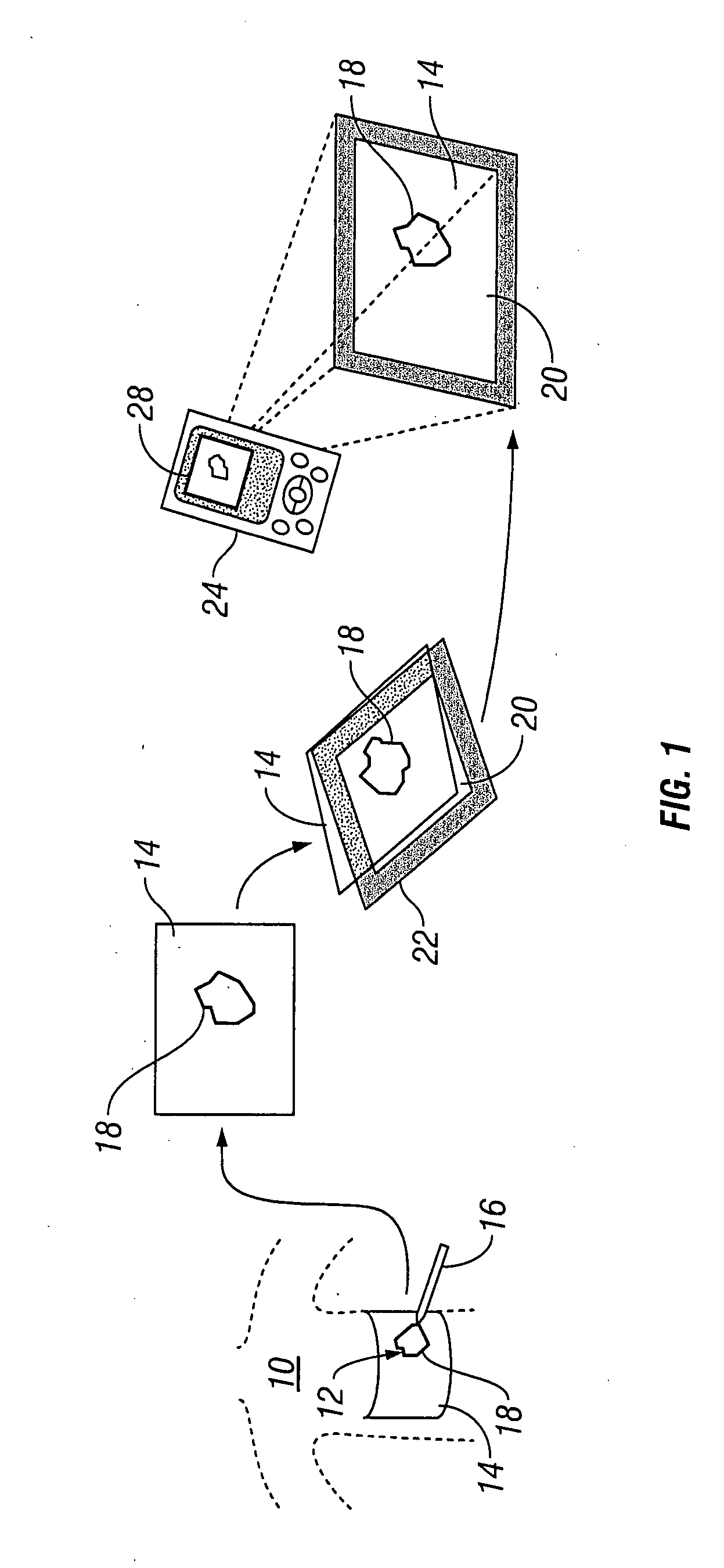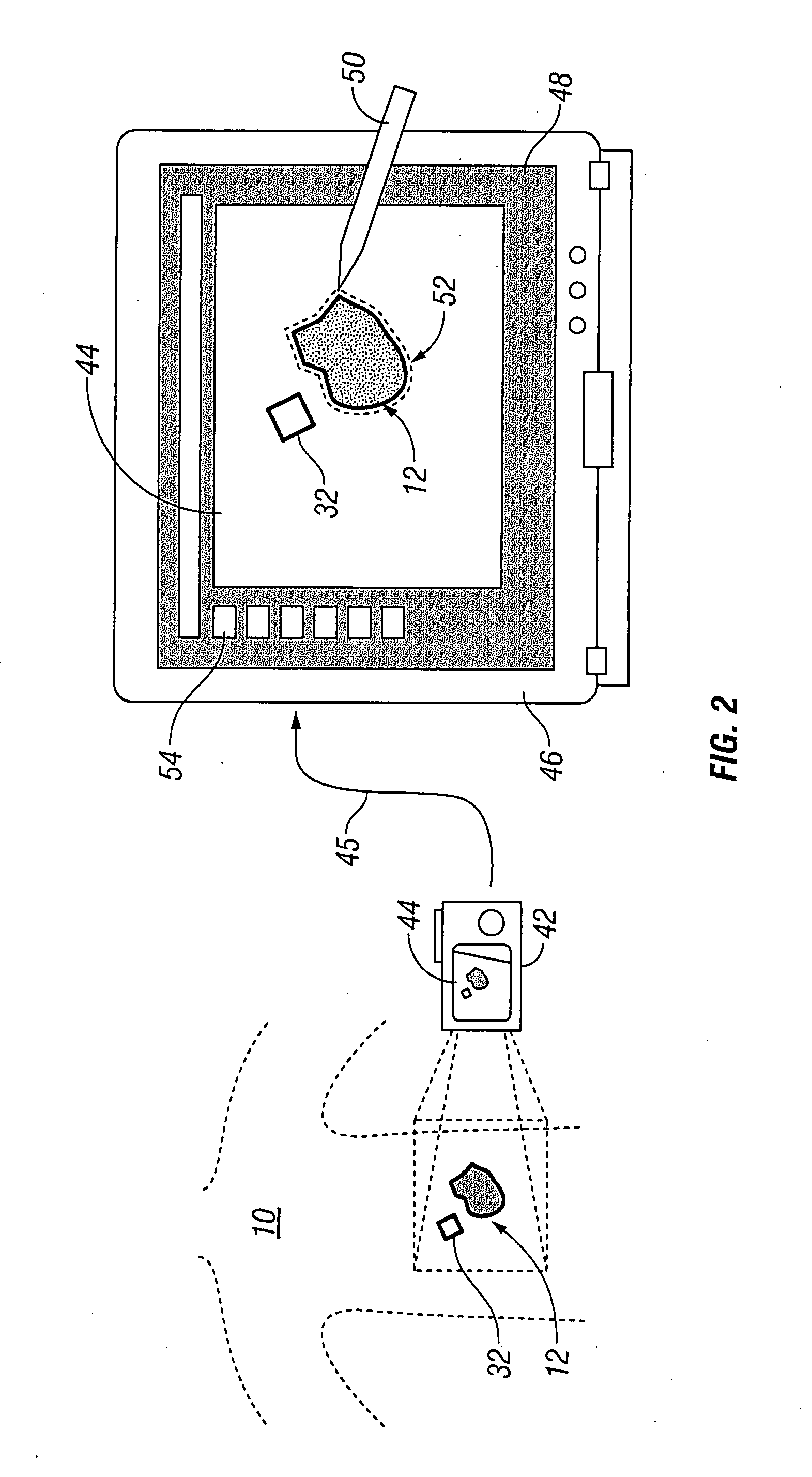[0018] It would therefore be desirable to have a wound measurement
system that achieved all of the goals mentioned above, namely; accuracy, discrimination (the ability to distinguish the
wound area from the periwound area),
repeatability, non-invasiveness, simplicity, and
cost effectiveness. Those parts of the
system that might come in direct contact with the patient should be aseptic and disposable. The
processing components of the system should be straightforward and intuitive to use by modestly skilled clinicians. The
processing components should likewise be capable of providing historical data to allow the user to track changes over time.
[0020] The method associated with the system described includes initially tracing the perimeter of the wound on a transparent or translucent film in a manner already known to most clinicians in the field. Rather than re-tracing the outline a second time however, the transparency is positioned on a simple template that allows both scaling and off angle positioning in the imaging process. The
digital imaging device of the system of the first preferred embodiment described above, captures the entire template with the wound trace contour inside. The digitized image is then processed by
software within the unit to automatically find the template reference features and the trace and displays certain results on a display screen. The processing system of the present invention may also include the steps of image data
thresholding, contour finding, square finding (used to identify the template), setting the
region of interest (associated with the reference features on the template), wound trace finding, calculating the areas, eliminating
distortion, and displaying the result with certain types of
data filtering.
[0021] By using a
digital camera or other imaging device it is possible to simplify the
data input process and also to avoid errors caused by the manual second tracings associated with previous systems. The imagining method is also much more flexible than using a fixed-size touch sensitive pad. Positioning the wound trace in association with the template also makes the
image processing much more reliable and accurate. The method of the present invention can further be used to measure multiple areas of a wound in a given region of tissue. The
digital imaging device quality and processing power requirement of the system of the present invention are relatively low so the methodology can be embedded into a single simple
microprocessor system. In contrast to the prior art, the
present method uses a
digital camera to capture the traced wound contour and then calculates the area by comparing it with the known size reference template features. There is no second tracing, and the
wound size is only limited to the size of the template used. By changing the low cost template, the method can be used for any wound. The use of the template with reference features of known dimensions allows the imaging process to both scale the image and account for other than normal to the surface viewing angles.
[0023] The method associated with the second preferred embodiment described above includes placing a small reference tag on the patient adjacent (but preferably outside) the wound and capturing a
digital image of the
wound site from a position generally normal to the plane of the wound area. The
digital image is then transferred to a
tablet PC or other computer having a display screen and a
graphical data input device associated with the display screen (such as a touch sensitive panel). Preferably the display can be positioned for both viewing and for graphical
data input. If the display is associated with a
tablet PC, for example, it may be positioned to lay flat on a writing surface such as a
desk. The image is then displayed on the screen of the PC and scaled (enlarged or reduced) to provide the clinician with an accurate view of the wound. The clinician then traces the wound perimeter with a
stylus on the screen (or other type of graphical
data input device) to define the extent of the wound.
Software within the system then calculates the area of the wound based on the traced outline and the scale of the image (as referenced to the tag that is included in the
field of view). Since the reference tag is designed to be easily recognizable to the computer the scaling can be very accurate. Defining the perimeter of the wound, on the other hand, is not so easy for the computer so this step in the process is left in the hands of the clinician.
[0024] In contrast to the prior art, this second embodiment, like the first, utilizes only a single tracing step and therefore greatly reduces the chance of introducing errors into the process. Unlike prior art methods that utilize touch pad technologies, the embodiment of the present invention described herein is able to beneficially scale the image of the wound before a trace is made by the clinician.
 Login to View More
Login to View More  Login to View More
Login to View More 


